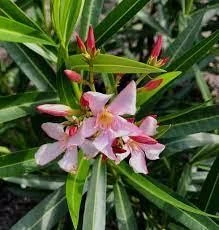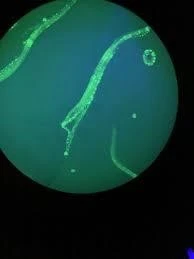GS Paper 2
United Nations Forum on Forests
News: The 19th session of the UN Forum on Forests (UNFF 19) took place in May 2024 at the UN Headquarters in New York, US.
Founding by UN ECOSOC: It was established in 2000 by the UN Economic and Social Council (ECOSOC), the United Nations Forum on Forests (UNFF).
Mission and Objectives: UNFF works to strengthen long-term political commitment towards sustainable forest management through various initiatives.
Membership and Participation:
- The forum boasts universal membership, comprising all Member States of the UN and specialized agencies.
- Notably, India stands as a founding member of UNFF, reflecting its commitment to forest conservation and sustainability.
Milestones and Achievements:
- The establishment of the first UN Forest Instrument in 2007 and the Global Forest Financing Facilitation Network (GFFFN) in 2015.
- In 2017, UNFF adopted the first UN Strategic Plan for Forests 2030, along with six Global Forest Goals, marking a pivotal step towards advancing sustainable forest management on a global scale.
IAF Review at UNFF19:
- A central focus of UNFF19 was the evaluation of progress made under the International Arrangement on Forests (IAF), a crucial international framework for sustainable forest management.
- The review aimed to identify gaps and formulate strategies to achieve the Global Forest Goals established in 2017 by 2030, underscoring UNFF’s commitment to advancing sustainable development agendas.
DigiLocker
News: DigiLocker has become a digital placeholder for administrative and government-related documents.
Definition: DigiLocker is a paperless solution meant to ensure that a user can access the latest and updated versions of their documents online in order to prove their identity and their credentials at any given moment
Ministry: DigiLocker is a flagship initiative of the Ministry of Electronics & IT (MeitY) under the Digital India programme. The platform was launched in 2015.
Legal Validity: Issued documents in DigiLocker are deemed at par with original physical documents as per Rule 9A of the IT Rules, 2016.
Applications: The app can be used when applying for a passport, reviewing marksheets, or proving one’s identity during travel.
- The app has over 270 million registered users and has facilitated the retrieval of nearly 6.7 billion documents, including Aadhaar, insurance policies, PAN records, and driving licenses.
Advantages:
- Convenience: Eliminates the need to carry separate sets of documents while on the move. Local Storage
- Local Storage: Documents can be fetched or stored in a local device.
- Validity: Digital documents are as valid as their originals.
- Efficiency: Helps with faster service delivery, as noted on the DigiLocker website.
- Fraud Prevention: Helps verifying officials keep at bay fake documents, poor quality print copies, and outdated documents that miss key details.
Issues:
- Accessibility Challenges: Individuals unfamiliar with smartphones or who find app navigation challenging may struggle to download DigiLocker, use OTPs, and access their credentials without assistance.
-
- Additionally, those who are illiterate face significant disadvantages.
-
- Data Consistency Problems: People with multiple names, aliases, or inconsistent spellings may face issues. Subtle changes like capitalized letters and initials can lead to document retrieval failures.
- Lack of Uniformity: There is no uniformity in how different government authorities and law enforcement bodies in India review official documents.
-
- Some insist on being shown virtual documents through DigiLocker, others claim the original hard copies are mandatory.
-
GS Paper 3
Nerium Oleander
News: Kerala has banned oleander flowers in temple offerings.

Nerium Oleander:
- Nerium oleander is commonly known as oleander or rosebay.
- It is a plant cultivated worldwide in tropical, subtropical, and temperate regions.
Uses: The shrub is noted for its drought tolerance and is often used for ornamental and landscaping purposes.
Oleander in Kerala:
- In Kerala, the plant is known by the names arali and kanaveeram.
- It is commonly grown along highways and beaches, serving as natural, green fencing due to its dense foliage and hardy nature.
Classical References in Ayurveda:
- Oleander has been frequently described in classical Ayurvedic texts such as Brihattrayi and Nighantus.
- The Charak Samhita specifically prescribes the leaves of the white-flowered variety for external use in treating chronic and obstinate skin diseases, including leprosy.
Therapeutic Uses in Ayurveda:
- The Bhavaprakasha text describes Karvira, another name for oleander, as a visha (poison).
- It is indicated for use in the treatment of various conditions, including:
-
- Vrana (infected wounds)
- Kustha (skin diseases, including leprosy)
- Krimi (microbes and parasites)
- Kandu (itching)
-
Toxicity:
- Ingestion or inhalation of smoke from burning oleander can be intoxicating.
- This is due to the properties of cardiac glycosides (a type of chemical) including oleandrin, folinerin, and digitoxigenin, which are present in all parts of the plant.
- Effects of oleander toxicity include nausea, diarrhea, vomiting, rashes, confusion, dizziness, irregular heartbeat, slow heartbeat, and, in extreme cases, death.
Kawasaki Disease
News: Two baby girls diagnosed with kawasaki disease were successfully treated at Coimbatore Medical College and Hospital (CMCH) very recently.

Kawasaki Disease:
- Kawasaki disease is a rare heart condition that causes a high fever and inflammation of the blood vessels.
- It predominantly affects children under the age of 5 and is one of the leading causes of heart disease in kids.
Historical Background: The disease was first described in Japan by Tomisaku Kawasaki in 1967.
Pathophysiology:
- The condition causes the immune system to attack blood vessels, leading to inflammation and swelling.
- It primarily affects the coronary arteries, which carry blood to the heart muscle.
- Additionally, it can cause problems with lymph nodes, skin, and the lining of a child’s mouth, nose, and throat.
Symptoms: Fever, Rash, Swelling of the hands and feet, Irritation and redness of the whites of the eyes, Swollen lymph glands in the neck, Irritation and inflammation of the mouth, lips, and throat.
Treatment: There is no cure for Kawasaki disease, but prompt treatment can significantly reduce the risk of complications.
Deadbots
News: Artificial intelligence (AI) chatbots designed to mimic the language and personalities of deceased individuals pose the risk of causing distress to loved ones through “unwanted digital hauntings”.
Definition: Deadbots, also known as griefbots, are AI-enabled digital representations of departed loved ones.
- Example: An AI chatbot called Project December uses patent-pending technology to simulate text-based conversations with anyone, including the dead.
Working: These chatbots simulate language patterns and personality traits of deceased ones using their digital footprint, like emails, social media posts and even voice recordings, to create a conversational AI that reflects their personality.
Potential Benefits:
- Comfort and Support: AI chatbots may offer solace and companionship to individuals navigating the grieving process after losing a loved one.
- Memory Preservation: These chatbots provide a means to preserve cherished memories and sustain a sense of connection with the departed.
Considerations:
- Psychological Well-being: Failure to prioritize safety in the design of AI chatbots can inadvertently contribute to psychological distress among users.
- Complex Consent Issues: Navigating the process of obtaining user consent for utilizing their digital footprint posthumously poses significant challenges and ethical dilemmas.
- Commercial Exploitation Risks: There’s a concern that the use of AI chatbots simulating deceased individuals could be exploited for commercial purposes, potentially capitalizing on people’s grief.
Kamikaze Drone (Switchblade drones)
News: In the ongoing conflict in Ukraine, Russia’s utilization of the Lancet Kamikaze drone, which incorporates American AI technology, highlights complex global supply chain issues.
Definition: Kamikaze drones, or suicide drones are small unmanned aircrafts with explosives.
- They are known as a “loitering munition” because they are capable of circling for some time in an area identified as a potential target and only striking once an enemy asset is identified.
History: The name Kamikaze comes from the World War 2 era’s feared Japanese kamikaze pilots, who conducted suicide attacks by intentionally crashing their explosive filled aircraft into enemy targets.
Advantages of Kamikaze Drone:
- Cost Efficiency: These drones offer a significant cost advantage over larger counterparts while maintaining striking capability, making them a more budget-friendly option for military operations.
- Stealth and Concealment: Their small size and advanced technology render them difficult to detect on radar, providing a tactical advantage in bypassing traditional defenses.
- Lightweight Design: Weighing just five-and-a-half pounds, these drones boast impressive agility and maneuverability, enabling them to fly up to 7 miles to reach their targets swiftly.
- Target Visualization: Equipped with cameras, these drones provide real-time visual confirmation of targets moments before impact, enhancing precision and effectiveness.
- Widespread Adoption:Various countries including Russia, China, Israel, Iran, and Turkey have developed their versions of small lethal drones, showcasing the widespread adoption of this advanced technology in modern warfare.
Lancet-3 Drone: The Lancet-3 drone is classified as a loitering munition, incorporating the Jetson TX2, hailed by Nvidia as the most power-efficient embedded AI computing device.
- The conflict in Ukraine, Russia’s utilization of the Lancet Kamikaze drone, which incorporates American AI technology, highlights complex global supply chain issues.
- Lancet-3 drone is a critical example of how Western technology, specifically from the United States, ends up in military hardware used by other nations.
Hermes-900
News: The Indian Army is set to get the first Hermes-900 Starliner drones soon.
Definition: Hermes 900 Kochav (Star) is an Israeli medium-size, multi-payload, medium-altitude long-endurance unmanned aerial vehicle (UAV) designed for tactical missions.
Features:
- Advanced MALE System: Developed by Elbit Systems, an Israeli company known for its expertise in defense technology, the Hermes-900 represents the latest generation of Medium Altitude Long Endurance (MALE) unmanned aerial systems.
- Multi-Role Capability: Primarily employed for reconnaissance, surveillance, and communications relay, the Hermes-900 can also perform critical tasks such as ground target acquisition, target designation, and close air support (CAS), ensuring its adaptability to various operational requirements.
- Extended Endurance: Boasting an impressive flight endurance of up to 36 hours, the Hermes-900 provides prolonged operational durations, enhancing its effectiveness in sustained missions.
- High Payload Capability: With a maximum payload capacity of 350 kg, the Hermes-900 can accommodate various sensor combinations, offering flexibility in mission customization and optimizing its performance in diverse operational environments.
Caenorhabditis Elegans Worm
News: Researchers found that after C. elegans worms ate a disease-causing bacteria, its children knew from birth to avoid making the same mistake.

Microscopic Nematode: Caenorhabditis elegans is a diminutive nematode, approximately 1 mm in size, typically inhabiting soil environments.
Significance in Biology: Renowned as one of the premier “model” organisms in biology, Caenorhabditis elegans serves as a cornerstone for scientific research due to its numerous advantages as an experimental subject.
Widespread Distribution: Despite its humble origins in soil, Caenorhabditis elegans has been identified in “higher” animals such as mice and humans, further emphasizing its relevance in biological studies.
Genome Sequencing and Neural Mapping: Caenorhabditis elegans holds the distinction of being the first multicellular organism to undergo complete genome sequencing and have its neural wiring meticulously mapped, marking significant milestones in scientific understanding of complex biological systems.
Exploration of Biological Mechanisms: Caenorhabditis elegans holds immense significance in the fields of neuronal and molecular biology owing to its straightforward nature and genetic manipulability, making it an invaluable resource for unraveling intricate biological mechanisms.
